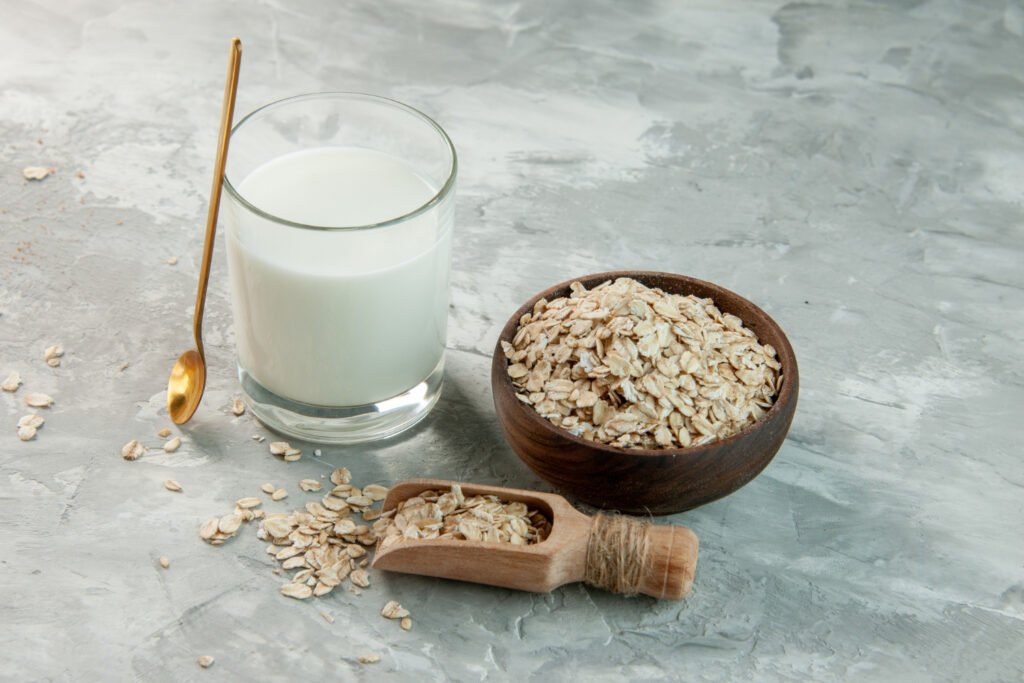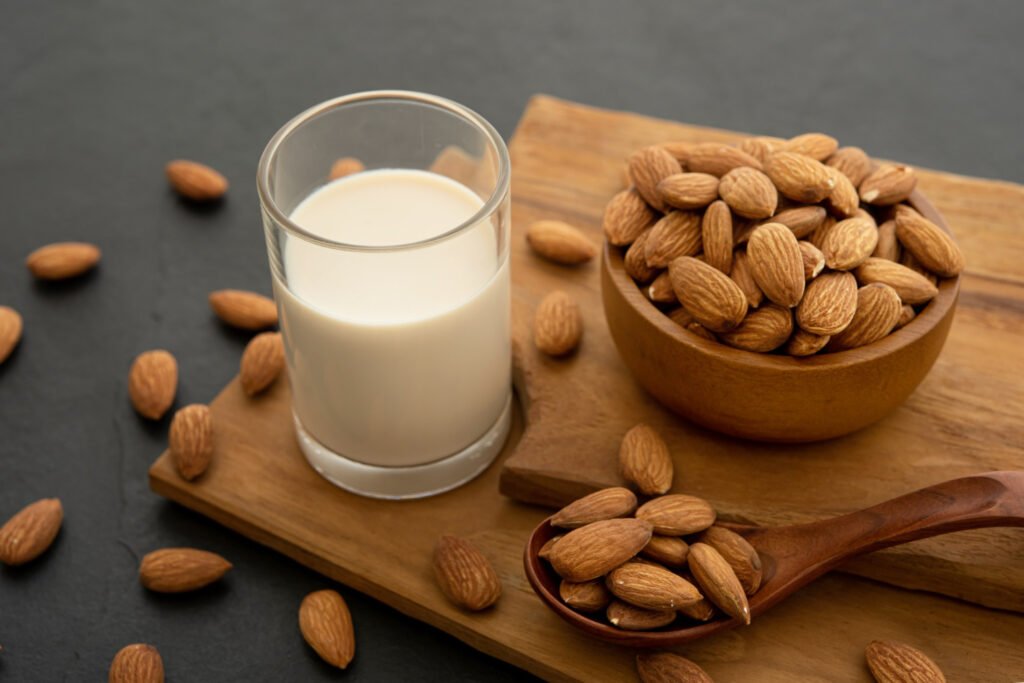Are you looking to switch from dairy milk to a delicious and nutritious plant-based alternative? Oat milk and almond milk are two popular choices that have gained immense popularity in recent years. Both beverages offer a creamy texture, delightful taste, and a range of health benefits. But which one should you choose? In this comprehensive guide, we’ll explore the similarities, differences, nutritional value, health benefits, and culinary uses of oat milk and almond milk. So, let’s dive in and decode the oat milk vs almond milk debate.
The Rise of Plant-Based Milks
Plant-based milk has taken the world by storm, offering a wide range of options for those seeking dairy-free alternatives. In the United States alone, plant-based milk sales increased by 61% between 2012 and 2016, indicating a growing shift in consumer preferences towards non-dairy beverages. Oat milk and almond milk have emerged as two of the most popular choices, providing individuals with lactose intolerance, milk allergies, or vegan dietary preferences an opportunity to enjoy a creamy and nutritious beverage.
Oat Milk: A Creamy and Nutritious Delight

Oat milk, a dairy-free alternative made from soaked oats and water, has risen to prominence in the past decade. With its smooth and creamy texture, oat milk has become a favorite among many individuals looking for a dairy-free milk option. It was first produced in the 1990s and has since gained popularity due to its neutral flavor and versatility in various recipes. Oat milk is an excellent choice for vegans, people with lactose intolerance, or nut allergies.
Regarding nutritional value, oat milk offers a range of benefits. In a one-cup serving of unsweetened oat milk, you can expect around 120 calories, 3 grams of protein, 16 grams of carbohydrates, and 5 grams of fat. Oat milk is also a good source of fiber, providing 2 grams per cup. Fiber is crucial in promoting healthy digestion, reducing cholesterol levels, and providing a feeling of satiety.
Almond Milk: A Versatile and Nutrient-Rich Option

Almond milk has a long history in European cookbooks and has been consumed since long history in European cookbooks. Made by blending almonds with water and then straining the mixture, almond milk offers a subtly nutty flavor and a smooth consistency. It has become a popular choice for individuals with lactose intolerance, milk allergies, soy allergies, or those following a vegan diet.
Regarding nutritional value, almond milk is relatively low in calories, with approximately 30 calories per one-cup serving. It contains 2.5 grams of fat, 1 gram of protein, and 1 gram of carbohydrates. Almond milk is also a good source of vitamin E, with one cup providing 50% of the recommended daily value. Vitamin E is an antioxidant that helps maintain immune health and may lower the risk of heart disease.
Oat Milk vs. Almond Milk: A Nutritional Showdown
When comparing the nutritional profiles of oat milk and almond milk, it’s essential to consider their differences in energy, carbohydrates, fat, and micronutrient content. While both kinds of milk offer a range of health benefits, they have some nutritional composition variations.
| Oat Milk | Almond Milk | |
| Taste | Creamy, slightly sweet | Mild nutty flavor |
| Consistency | Thicker, similar to dairy milk | Thinner than dairy milk |
| Nutritional Value | Generally higher in calories, carbohydrates, and fiber | Generally lower in calories, carbohydrates, and fiber |
| Protein | Lower protein content | Higher protein content |
| Fat Content | Lower fat content | Higher fat content |
| Allergies | Gluten-free, nut-free | Gluten-free, nut-based |
| Sustainability | Lower water usage, moderate land usage | Higher water usage, higher land usage |
| Fortification | Often fortified with vitamins and minerals | Often fortified with vitamins and minerals |
| Environmental Impact | Lower greenhouse gas emissions compared to dairy milk | Lower greenhouse gas emissions compared to dairy milk |
| Availability | Widely available | Widely available |
Pros and Cons of Oat Milk
Oat milk, with its creamy texture and neutral flavor, has many advantages and disadvantages. Let’s explore the pros and cons of incorporating oat milk into your diet.
Pros of Oat Milk
- Vegan and lactose-free: Oat milk is an excellent choice for individuals following a vegan diet or those with lactose intolerance.
- Creamy and neutral flavor: Oat milk’s smooth and neutral taste makes it a versatile option for a wide range of recipes, from lattes to baked goods.
- Good source of fiber: With 2 grams of fiber per cup, oat milk promotes healthy digestion, reduces cholesterol levels, and provides a feeling of fullness.
- Environmentally friendly: Oats require less water and resources than almonds, making oat milk a more sustainable choice.
Cons of Oat Milk
- Higher in carbohydrates: Oat milk contains more carbohydrates than almond milk, which may not suit individuals following low-carb or ketogenic diets.
- Potential for gluten cross-contamination: While oats are naturally gluten-free, cross-contamination may occur during processing. Individuals with gluten sensitivities should opt for certified gluten-free oat milk.
- Carrageenan concerns: Some oat milk brands may contain carrageenan, a common food additive. While generally considered safe, high carrageenan consumption may disrupt digestive health.
Pros and Cons of Almond Milk
Almond milk, with its subtle nutty flavor and versatility, offers several benefits and considerations. Let’s explore the pros and cons of incorporating almond milk into your diet.
Pros of Almond Milk
- Lactose-free and vegan: Almond milk is an excellent option for individuals with lactose intolerance, milk allergies, or those following a vegan diet.
- Low in calories: With only 30 calories per cup, almond milk is suitable for individuals aiming to manage their calorie intake.
- Good source of vitamin E: Almond milk provides a significant amount of vitamin E, which plays a role in immune health and may lower the risk of heart disease.
- Versatile culinary uses: Almond milk’s subtle nutty flavor makes it ideal for sweet and savory recipes, from smoothies to pasta sauces.
Cons of Almond Milk
- Not suitable for individuals with nut allergies: Almond milk contains almonds and may trigger allergic reactions in individuals with nut allergies.
- Low protein: Almond milk is relatively low in protein compared to cow’s milk, which may be a consideration for individuals aiming to meet their protein needs.
- Potential environmental impact: Almond milk production requires a significant amount of water, which may affect water resources and environmental sustainability.
Which Milk Alternative is Right for You?

The choice between oat milk and almond milk ultimately depends on your preferences, dietary needs, and culinary uses. Both kinds of milk offer a range of benefits and considerations, making it essential to consider your specific requirements before selecting.
If you prefer a creamy texture and neutral flavor, oat milk may be the perfect choice. Its higher carbohydrate content and natural sweetness make it an excellent option for baking and coffee beverages. Oat milk’s sustainability and lack of nut allergens also make it a popular choice among environmentally conscious individuals and those with nut allergies.
On the other hand, if you enjoy a subtle nutty flavor and versatility in various recipes, almond milk may be the ideal option. Its lower calorie content and potential paleo and keto diet compatibility make it suitable for individuals aiming to manage their calorie and carbohydrate intake. Almond milk’s use in sweet and savory dishes allows endless culinary possibilities.
Making the Best Choice
When selecting oat milk or almond milk, there are a few factors to consider:
- Nutrients: Look for brands that fortify their products with essential micronutrients like calcium, vitamin D, and vitamin A to ensure you meet your daily nutritional needs.
- Added sugar: Check the label for added sugars, as excessive consumption of added sugars may have adverse health implications. Opt for unsweetened varieties or those with minimal added sugars.
- Texture and taste: Consider the texture and taste that align with your preferences and intended culinary uses. Oat milk offers a creamy and neutral flavor, while almond milk provides a subtle nuttiness.
- Environmental impact: If sustainability is a priority for you, consider the water usage and environmental impact associated with oat milk and almond milk production.
In conclusion, both oat milk and almond milk offer viable alternatives to dairy milk, providing individuals with lactose intolerance, milk allergies, or vegan dietary preferences a chance to enjoy a delicious and nutritious beverage. The choice between oat milk and almond milk ultimately depends on your personal preferences, nutritional requirements, and culinary uses. So go ahead, experiment with both options and find the milk alternative that best suits your needs and taste buds. Cheers to a creamy and dairy-free journey!







Leave a Reply